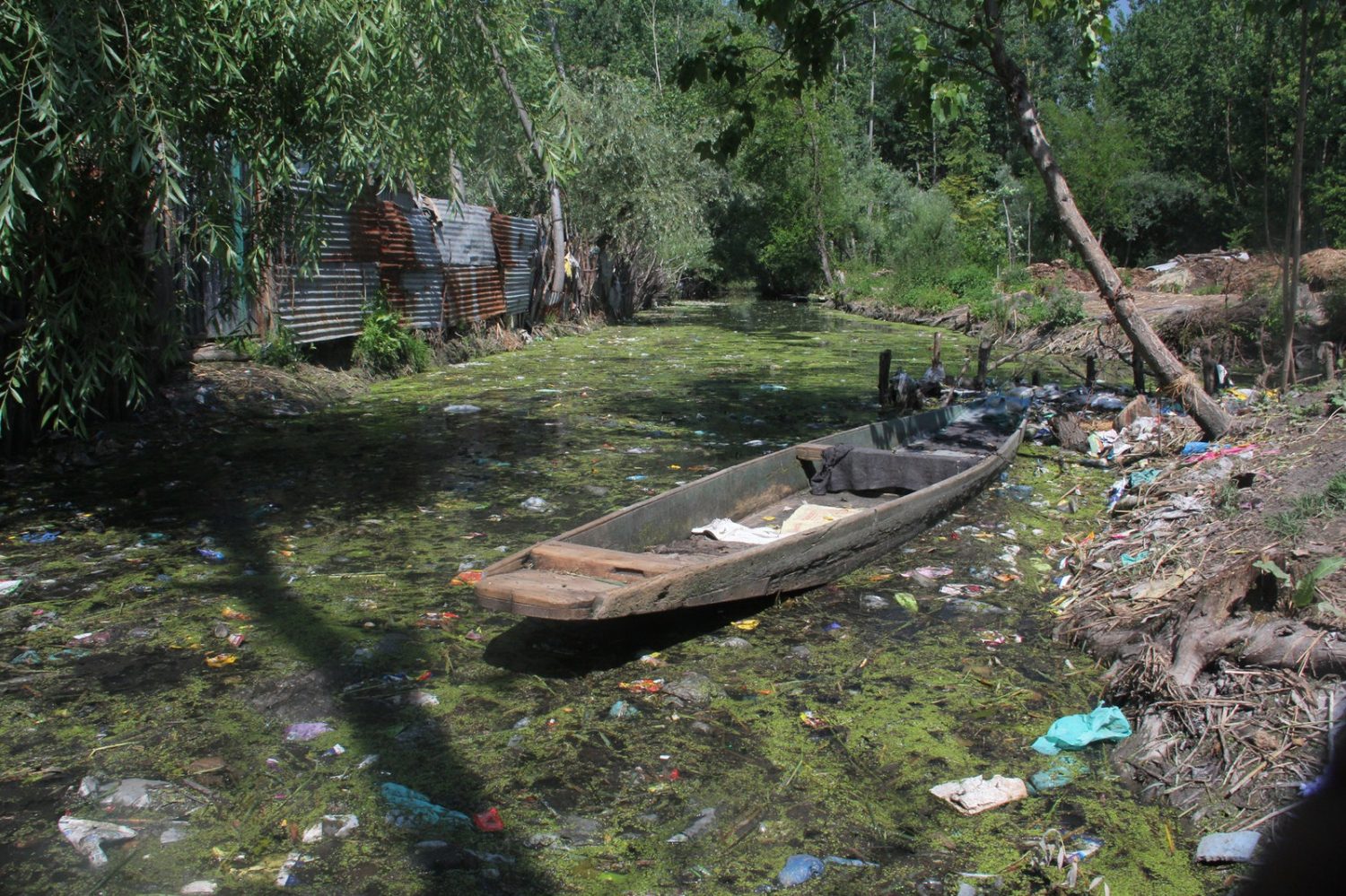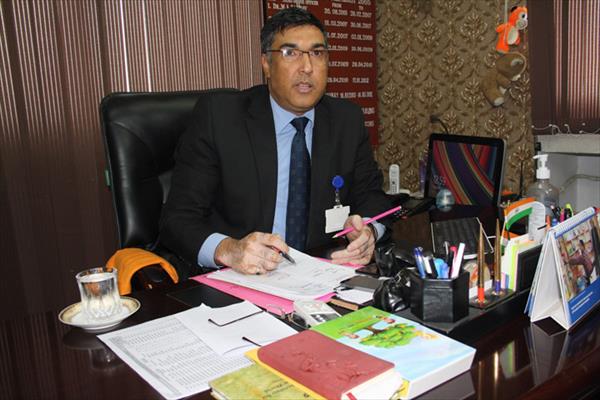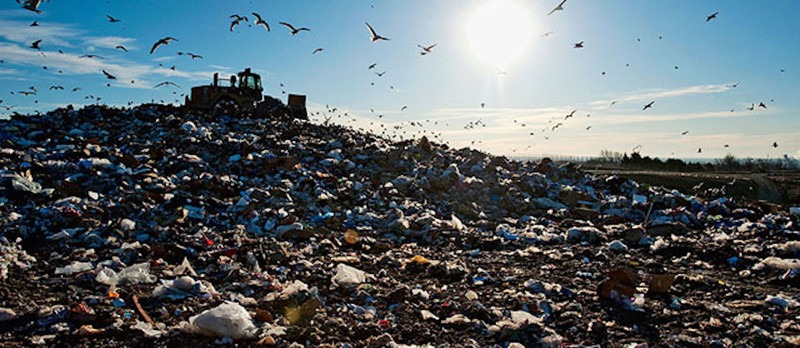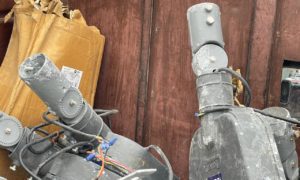There resides a world in and around the Achan dumping site, where constant suffering, foul ordeal, sick health and the brunt of state’s apathy combine to make life a living hell.
I.
He tells some ghastly accounts of human ordeal that seemingly has nothing to do with the perpetual conflict gripping the Valley since the fall of 1947. It does, however, have a lot to do with the local governance—for which many gullible became vote-banks, foot soldiers and supporters, despite the blatant life threats and unknown guns shadowing them.
Among the accounts, the one about a commoner and his cow is shuddering.
As the commoner went after his cow to the Achan dumping site one day, he accidentally fell on the ground and got injured. His wound festered rather than healing with time. When it became gangrene, his limb was amputated. Even then, the infection couldn’t vanish. Some three months later, the commoner was in his grave. He died, the narrator says, because of the untreated waste being dumped in Achan.
Telling this story makes Basher Ahmad restless. He takes a good look at the mound of stinking litter and recalls how the locals filed a case against the Srinagar Municipal Corporation (SMC) when the ordeal became unbearable.
Then in 2007, the SMC was served with a judicial notice to close the dumping site within 18 months and locate new one. But neither did they close the dumping site nor did they locate the new site. Since then, many hearings have taken place. The case is now with National Green Tribunal (NGT). But Basher and his co-campaigner Ghulam Rasool Dar are continuously following the case.
All the verdicts, he says, were never taken seriously by the SMC. “The body is taking the court for a ride,” he says, convincingly. But thanks to his relentless campaign, the garbage is now being segregated at Achan. But nothing has been done to treat the already accumulated rubbish of the previous three decades, he says, which has now polluted groundwater to an extent that it has been declared unfit for drinking.
II.
Achan—the biggest dumping site in Srinagar—is a 15-minute drive from Jahangir Chowk. The fenced site remains guarded by J&K Police and the SMC employees round the clock. No civilian or fact-finder is allowed. Inside, the garbage simmers in gigantic mounds, crumbling in heat and rain, and flowing into the nearby agricultural land and the famous Anchar Lake. It drastically disturbs the eco-system.

Interestingly, this 31-year-old landfill site has also now become an airport for eagles, where they land and takeoff. But the place wasn’t always putrefying—or, declared as the protective zone.
The 616 kanal site was once a wetland and home to thousands of birds and vegetation. It was a stable source of income for the locals. It was interconnected with Anchar Lake and non-existent Khushal Sar through a web-like weaving of the water bodies. The dumping activity at Achan has also badly disturbed the other water bodies, the locals say.
The wetland became wasteland in 1983 when the then Governor Jagmohan ordered its land-filling for making a satellite colony. The proposal was drafted. But nothing matured. Instead, the place became an epidemic centre—where thousands of birds seasonally arrive to return sick home.
Even farmers have abandoned farming over a little portion of what is now left of the cultivable land. With time, the dumping site has become a graveyard of many activities and species that it once housed.
III.
Inside the SMC headquarters at Karan Nagar, the ‘hyperactive’ commissioner in-charge Dr Shafkat Khan turns thoughtful over the Achan’s ground reality. Like one of his predecessors—Dr GN Qasba who once held a controversial Kehwa party at the site only to face the local wrath—the incumbent commissioner boasts about his departmental feats than sparing a thought on the rotting ground.
“The department has purchased a metallic segregation machine worth Rs 10 crore,” says Khan. “The department is working hard in identifying the gaps and re-figuring things. With the introduction of hoppers the department is aiming to catch garbage at the door steps.”

Dr Shafkat Khan, SMC, Commissioner In charge
He turns down the complaints against the toxic effect of the dumping site and the law that bars the residents from constructing within the site radius of 30 meters. Instead, Khan sees the solution of the problem when people start owning their garbage and develop sense of segregation at source.
“We have one of the best dumping sites in India,” he says. “We are implementing all the scientific techniques to treat the waste and our most awaited Waste to Power Plant will also be in action on near future.” But then, some questions — why is the place incessantly reeking with stench and why the locals are continuously falling sick — remain unanswered.
To provide an alternative, the SMC has tied up with Chintan NGO, helping them in providing Human Scavengers / rag pickers that aid in segregating the garbage. However the manual scavenging, many feel, can in turn lead to more disastrous health hazards.
IV.
But at a time when SMC is boasting over its own men and machinery, the locals are grappling with escalating social issues. They are now facing issues in finding a match for their sons and daughters.
No one from outside is ready to mingle into their society, where the air is filled with foul smell.
In nearby localities, the marriage dates are fixed keeping in view the month with lowest temperature. This is done to prevent smell playing a spoilsport in their happy occasions. During the summers, life becomes miserable. Air starts reeking of stench. Breathing becomes difficult. At times, the locals say, even opening windows becomes impossible.
V.
Amid this assault, people irrespective of age and gender are suffering from frequent allergies and viral breakouts. There is an alarming rise in the number of cancer patients in the area, the locals say. Many women have been diagnosed with breast cancer and they blame the dumping site for this.
At 45, Maryam is an incredibly skinny woman, living at a stone’s throw from the dumping site. All window panels of her single-storied house remain shut. She occasionally opens them—only to shut them down swiftly after bad air rushes through and spoils the mood inside.
A regular visitor to SKIMS, she is on medication for constant throat irritation, dry cough and viral fever. “Doctors lately told me that I keep on falling sick due to the bad air,” Maryam says. But instead of her health, she fears about her child and grandchildren, who often fall sick to fever, cough and cold and gastro problems.

Representational image
She wants to move away from the place to provide the healthy life to her family, but she can’t. She has already invested a lot in the making of her house, she says. And now, the financial instability limits her option to breathe pure.
But as she continues to stay put, truckloads of body parts, like uterus, pancreas, fetus and other post operative waste, is being dumped untreated in the dumping site. “Not only the hospital waste,” says Basher, a local campaigner, “but untreated dead animals are also being dumped here.”
Amid this dumping riot, the world that resides in and around Achan will stay stinking and is likely to fall sick.






